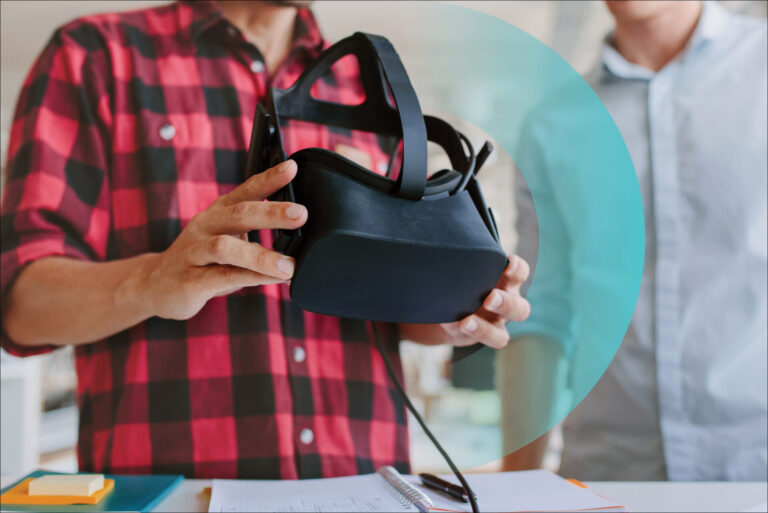As hybrid work becomes the new norm, organisations face the challenge of navigating and optimising modern work. The landscape is rapidly evolving, with staff cuts, economic uncertainties, and the integration of advanced technologies like AI and immersive technology.
With the rise of ‘The year of Efficiency,’ organisations have raced to shift focus from the employee experience back to old-school corporate thinking. But the false dichotomy is, efficiency only exists with an environment that motivates it. The key lies in striking a delicate balance between efficiency and engagement to foster a thriving community.

Embracing the shift from engagement to efficiency
As organisations navigate the post-pandemic landscape, there is a noticeable shift toward efficiency and productivity. It is crucial to balance and prioritise employees’ well-being and development alongside cost-cutting, and risk reduction.
Equalising the workplace maturity of your organisation is a good starting point. Does everyone have access to the same opportunities, training, products and information to do their best work in the first place? Reducing silos and corporate hierarchies help to build psychological safety and encourages collaboration.
To achieve more balanced growth and engagement across your organisation, you also need to be aligning workplace initiatives with team and company goals. Cross-collaboration can help build solutions for all employees in mind, not just key cohorts. A more aligned vision between IT, Communications and HR means businesses means better-integrated products that create a single pane of glass that helps reduce noise, tool confusion and project costs. It also increases accessibility, speeds up processes, and increases community engagement all at once.

Optimising deep work
Remote and hybrid work environments have introduced new distractions, hindering deep work and productivity, creativity and innovation. But the thing is, this isn’t a new problem. The traditional workplace has been battling the challenge of ‘distraction’ since its inception. For example, meeting fatigue, noisy technology, disengaged employees and silos with stores and frontline workers are not new issues; hybrid work just made them more apparent.
To adapt to the rise of modern work, organisations must redefine work conditions and provide employees with the necessary tools and strategies that minimise interruptions. This doesn’t mean mandating a return to the office Monday to Friday and cutting back on culture, but rather understanding the needs of your people and equipping them with the right tools, resources and environments that make them successful. Think tech integrations, frontline technology, flexible hours so parents can drop their kids off at school, and automation that speeds up processes and access to information on the run.
The responsibility of ‘deep work’ shouldn’t always land on the employee. It is just as much up to the organisation to find ways to reduce distractions for them to enhance their working experience. Implement better collaborative tools that enhance two-way engagement and reduce emails. Find ways to reduce noise in the workplace by being flexible around employee needs, and move to a more ‘agile’ way of working. By optimising deep work, organisations can balance focused, distraction-free work as well as collaborative social interactions at work and at home.
The changing role of the communicator in the rise of new technology
Immersive technologies like AI, AR, and VR are set to revolutionise communication, collaboration, and interaction. Major companies like Walmart are already investing heavily in these technologies for soft and hard skills training, indicating their potential impact across industries. This presents an opportunity for communicators to play a crucial role as sherpa/translators, leveraging these technologies to enhance engagement and collaboration.
Communicators can make their impact by developing storytelling techniques for immersive platforms and learning to collaborate effectively with technical teams, leaders, and stakeholders. Don’t be afraid to experiment with tech and leverage external partnerships to understand use cases for your organisation better. It is easy to label tech as an IT problem, but it is crucial for communicators and HR personnel to continue to have a seat at the table, to properly guide their organisation around the importance of collaboration, well-being, training and engagement as social interactions become more engrained in the virtual.
Tackling an age-old problem with a new face
Optimising the modern workplace to achieve more ‘deep work’, is not a new problem, but with the rapid rise of new technologies and hybrid working, the issue can no longer be ignored. It is easy to move into ‘efficiency mode’ and make drastic cuts on culture and employee experience, but engagement and efficiency go hand in hand and it’s important organisations continue to recognise this when things get hard.
Key takeaways for optiming deep work with the rise of modern wok:
- Equalise digital and workplace maturity across your organisation to maximise employee efficiency and engagement company-wide
- Redefine your work conditions and equip employees with the necessary tools and strategies that minimise interruptions to get the best out of your workers
- Optimise deep work by balancing focused, distraction-free work and collaborative and social interactions at work and at home
- Balance and prioritize employees’ well-being and development alongside cost-cutting and risk reduction, especially with the rise of new technology
- Align workplace initiatives with organisational goals and encourage cross-collaboration to increase engagement, reduce tool confusion and cut back on duplicate projects
- Don’t label technology an IT problem – it’s more important than ever that communications and HR teams have a seat at the table to ensure the employee experience is being taken into consideration
- Embrace change and engage external partnerships if needed to increase your team’s understanding of new technology to make more educated decisions around its use cases
Embracing and adapting to change
Remember, engagement and efficiency are not enemies, they aren’t mutually exclusive, and this is only becoming more apparent the faster technology changes. Creating a workplace that motivates efficiency is more important than ever so culture, innovation and engagement can thrive. Embrace and adapt to the new changes as quickly as possible, and claim your seat at the table.
Need help navigating the future of work? Get in touch with one of our friendly consultants today!



